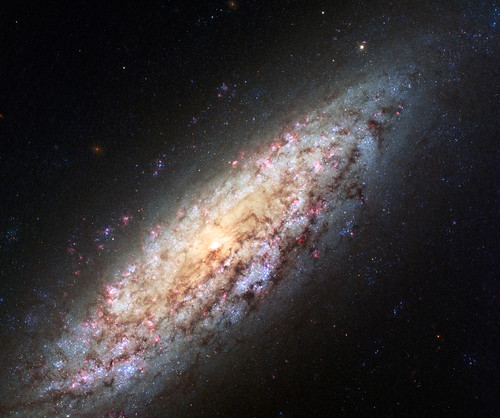Today's APOD is a fine picture, and personally I am always happy to see galaxies being showcased as APODs. Particularly if the galaxy rarely has its portrait taken.
NGC 6503. Photo: NASA, ESA, D. Calzetti (University of Massachusetts),
H. Ford (Johns Hopkins University), and the Hubble Heritage Team
The loneliness and remote position of dwarf galaxy Wolf-Lundmark-Melotte at the outskirts of the Local Group, made me think of another nearby but isolated galaxy, NGC 6503.
http://www.nasa.gov/image-feature/godda ... t-in-space wrote:
Most galaxies are clumped together in groups or clusters. A neighboring galaxy is never far away. But this galaxy, known as NGC 6503, has found itself in a lonely position, at the edge of a strangely empty patch of space called the Local Void.
The Local Void is a huge stretch of space that is at least 150 million light-years across. It seems completely empty of stars or galaxies. The galaxy’s odd location on the edge of this never-land led stargazer Stephen James O’Meara to dub it the “Lost-In-Space galaxy” in his 2007 book, Hidden Treasures.
NGC 6503 is 18 million light-years away from us in the northern circumpolar constellation of Draco. NGC 6503 spans some 30,000 light-years, about a third of the size of the Milky Way.
So Wolf-Lundmark-Melotte, a small irregular galaxy, finds itself at the edge of the Local Group, whereas NGC 6503, a small spiral galaxy, finds itself at the edge of the Local Void. Both are bravely making new stars, but not so many that these galaxies can grow much in size. There is probably not so much gas around at the edge of the cosmic wilderness.
To paraphrase William Wordsworth, I wandered lonely as a star... no, as a cloud. No, as a smallish galaxy where Groups and Voids end.
Ann
 Wolf-Lundmark-Melotte
Wolf-Lundmark-Melotte